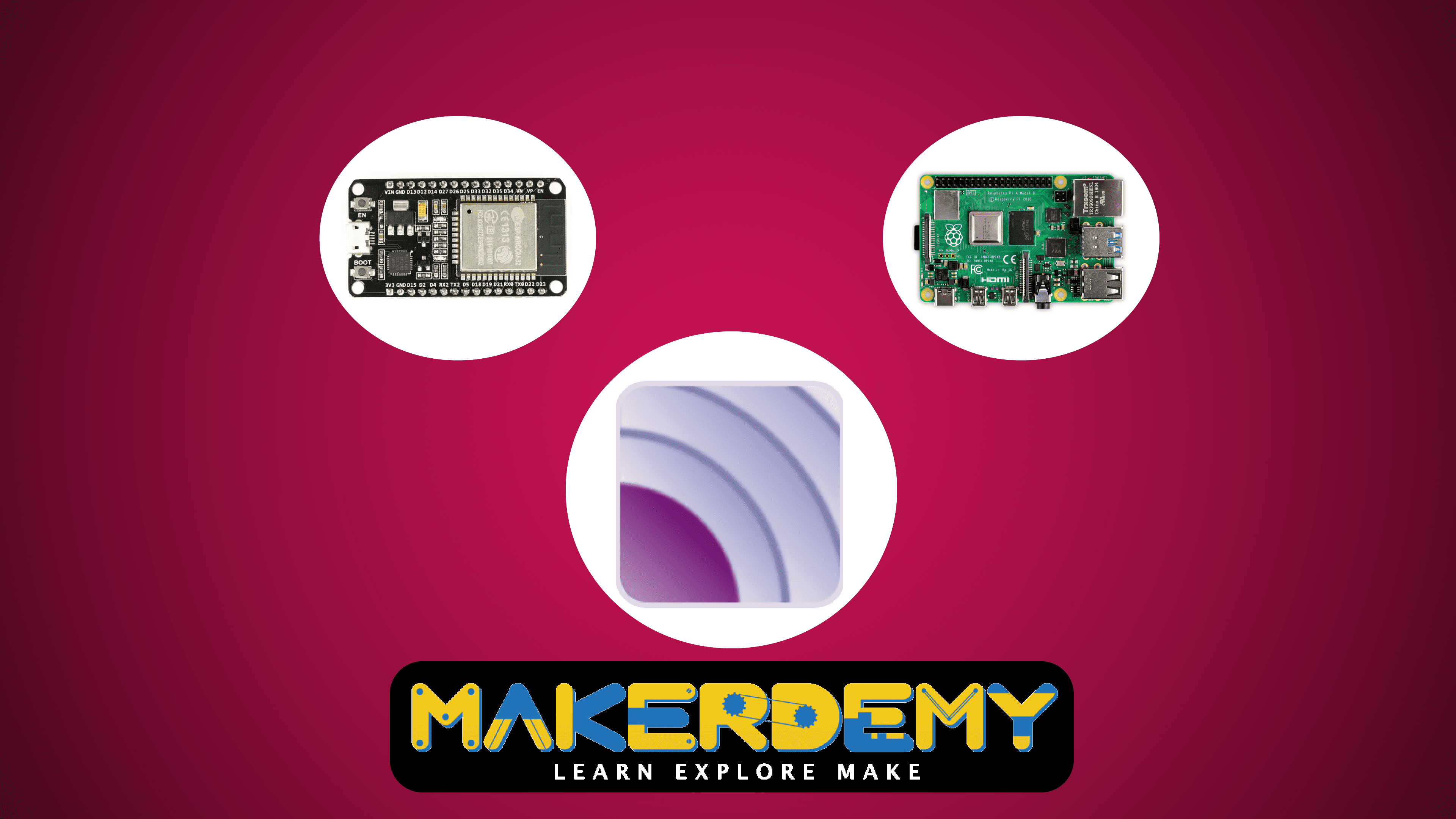MQTT Masterclass - Level 3
Overview
MQTT (MQ Telemetry Transport) is a lightweight open messaging protocol that provides resource-constrained network clients with a simple way to distribute telemetry information in low-bandwidth environments. The protocol, which employs a publish/subscribe communication pattern, is used for machine-to-machine (M2M) communication.
The course starts off with the introduction of MQTT and builds on the Features that define the purpose of the protocol. A detailed overview of how MQTT benefits the field of Internet of Thing is also covered. Next, the course moves on to the MOSQUITTO MQTT BROKER which is one of the standard MQTT broker tool available and teaches how to install and test in on Raspberry pi 3 and Laptop running Windows OS. The course then proceeds to introduce the MQTT Client tools that help to Publish and Subscribe messages effectively.
The course also teaches the ESP8266 which is a low-cost WiFi module that can be programmed using the Arduino IDE. Then the course demonstrates two projects that use MQTT protocol with the ESP8266 12E module.
Project 1: In this project, you will learn how to Remotely control LED and Publish readings from temperature and humidity sensor using Raspberry Pi, ESP8266 and MQTT Protocol
Project 2: In this project, you will learn about the Swachh garbage system where an ultrasonic sensor is used along with ESP8266 and Raspberry Pi to monitor the percentage of the garbage-filled in the bins.
The projects are designed to showcase the potential use cases of the MQTT protocol and the ESP8266 module such that you can build your projects.
Why You Should Consider Taking this Course at Study365?
Study365 is a leading online provider for several accrediting bodies, and provides learners the opportunity to take this accredited iAP course. At Study365, we give our fullest attention to our learners’ needs and ensure they have the necessary information required to proceed with the training.
Learners who register will be given excellent learning support, discounts for future purchases and be eligible for a TOTUM Discount card and Student ID card with amazing offers and access to retail stores, the library, cinemas, gym memberships and their favourite restaurants.
- About the Tutor
- Learning Outcomes
- Who is this Course for?
- Entry Requirements
- Method of Assessment
- Certification
- Awarding Body
- Career Path & Progression

Venkatesh is the founder of Makerdemy which is based in Singapore and has operations in Chennai, India. He has a BSc. in Electrical Engineering from the University of Madras and a Masters in Financial Engineering from the National University of Singapore. He also has an MBA from the Indian Institute of Management in Bangalore. Venkatesh strongly believes that education helps transform people’s lives and that it should be made accessible to everyone.
- Understand the Message Queuing Telemetry Transport IoT protocol
- You will learn the features of MQTT
- You will learn to Develop a Garbage monitoring system using Ultrasonic sensor, ESP8266, Raspberry pi and MQTT
- You will learn to setup Mosquito MQTT Broker
- Understand the utilities of the ESP8266 chip
- IT professionals
- Students who want to who wants to learn about the MQTT protocol
- Learners should be over the age of 16, and have a basic understanding of English, ICT and numeracy
- A sound educational background is recommended
- Knowledge of Essential tools like mini breadboard, jumper wires, a multimeter, a soldering iron and solder, wire cutter
- Essential modules: 1 x Raspberry pi 3 , 1 x ESP8266 12E module, 1 x Ultrasonic sensor HCSR-04, 1x DHT11 temperature and Humidity sensor
This is a knowledge-based course, and thus, will contain no method of assessment.
Upon the successful completion of the course, learners will be awarded an accredited Certificate of Completion for MQTT Masterclass - Level 3 by iAP.
The International Awards for Professionals (iAP) is an awarding body established in 1999 that aims to promote a high educational standard. They hope to create online education that is trustworthy and credible. They are focused on raising the standards of online education, and ensuring it is accessible to all. The iAP provides accreditation for a range of educational establishments, and monitors and continually develops the educational standards of such institutions. Their globally recognised certifications give learners the opportunity to acquire the skills and knowledge needed to gain employment in the chosen fields.
Mastering MQTT can open up many career paths for you especially if IT is your field. Listed below are some of the many options. Given below are job titles you can compete for with additional qualifications along with the average UK salary per annum according to https://www.glassdoor.com.
- IT specialists
- IOT Developer
- Internet of Things Engineer
Course Curriculum
| 1. Getting Started with the MQ Telemetry Transport Protocol | |||
| 1.1. Introduction to the course | FREE | 00:06:00 | |
| 1.2. MQ Telemetry Transport: The Origin Story | FREE | 00:06:00 | |
| 1.3. How does MQTT work? | FREE | 00:05:00 | |
| 1.4. Overview of MQTT Methods, Models & Features | FREE | 00:06:00 | |
| 1.5. Why use MQTT over other Protocols? | FREE | 00:06:00 | |
| 2. In-depth Understanding of MQTT Packets | |||
| 2.1. The MQTT Control Packet Format | 00:06:00 | ||
| 2.2. Overview of Control Packets and their functions | 00:06:00 | ||
| 2.3. Setting up your 1st MQTT Project: Project 1 | 00:13:00 | ||
| 2.4. Working Principle & Interfacing of the Actuator and Sensor | 00:04:00 | ||
| 2.5. Configuration & Coding of the MQTT Clients | 00:05:00 | ||
| 2.6. MQTT Control Packet Analysis: Part 1 | 00:10:00 | ||
| 2.7. MQTT Control Packet Analysis: Part 2 | 00:06:00 | ||
| 3. Cloud MQTT Integration with IBM Cloud | |||
| 3.1. Setting up the IBM Cloud MQTT | 00:05:00 | ||
| 3.2. Integrating IBM Cloud to 1st MQTT Project | 00:05:00 | ||
| 3.3. Project Testing & MQTT Packet Capture | 00:03:00 | ||
| 3.4. Packet Analysis with Cloud MQTT Implementation | 00:05:00 | ||
| 4. Topics, Topic Filtering & Wildcards | |||
| 4.1. What are topics in MQTT & What is meant by Topic Filtering? | 00:04:00 | ||
| 4.2. Office Monitoring System using MQTT: Project 2 Setup Part 1 | 00:11:00 | ||
| 4.3. Office Monitoring System using MQTT: Project 2 Setup Part 2 | 00:03:00 | ||
| 4.4. Wildcards: How to subscribe to Multiple Topics Simultaneously? | 00:06:00 | ||
| 4.5. Implementation & Analysis for Topics, Topic Filtering & Wildcards in MQTT | 00:08:00 | ||
| 5. Quality Of Service Levels in MQTT | |||
| 5.1. What is Quality of Service? | 00:07:00 | ||
| 5.2. Instant Messaging Application with MQTT: Project 3 Setup | 00:05:00 | ||
| 5.3. QoS 0 Implementation with Packet Analysis | 00:06:00 | ||
| 5.4. QoS 1 & QoS 2 Implementation with Packet Analysis | 00:04:00 | ||
| 6. Persistence in MQTT | |||
| 6.1. What is Session Persistence in MQTT? | 00:05:00 | ||
| 6.2. FAQ & Use Cases of Session Persistence | 00:05:00 | ||
| 6.3. Implementation & Analysis of Persistent Session in Project 3 Part 1 | 00:04:00 | ||
| 6.4. Implementation & Analysis of Persistent Session in Project 3 Part 2 | 00:05:00 | ||
| 7. Retained Messages in MQTT | |||
| 7.1. What are Retained Messages? | 00:06:00 | ||
| 7.2. GPS Asset Tracking Using MQTT: Project 4 Setup | 00:07:00 | ||
| 7.3. GPS Asset Tracking Using MQTT: Project 4 Client Code | 00:05:00 | ||
| 7.4. GPS Asset Tracking Using MQTT: Project 4 Implementation & Analysis | 00:05:00 | ||
| 8. Last Will & Testament in MQTT | |||
| 8.1. What is the Last Will & Testament Feature in MQTT? | 00:08:00 | ||
| 8.2. Implementation of LWT in Project 2: Setup & Client Code | 00:05:00 | ||
| 8.3. Analysis of LWT in Project 2: Project Implementation | 00:04:00 | ||
| 8.4. Analysis of LWT in Project 2: Packet Analysis | 00:05:00 | ||
| 9. Keep Alive in MQTT | |||
| 9.1. What is Keep-Alive in MQTT? | 00:08:00 | ||
| 9.2. Understanding Keep Alive using Project 4: Setup | 00:06:00 | ||
| 9.3. Understanding Keep Alive using Project 4: Implementation | 00:04:00 | ||
| 9.4. Understanding Keep Alive using Project 4: Packet Analysis | 00:05:00 | ||
| 10. Security in MQTT | |||
| 10.1. Security Threats for MQTT | 00:05:00 | ||
| 10.2. Project 4 Security – Authentication: Implementation & Analysis | 00:04:00 | ||
| 10.3. Project 4 Security – Authorization with TLS/SSL: Implementation & Analysis | 00:07:00 | ||
| 10.4. Project 4 Security – Payload Encryption: Implementation & Analysis Part 1 | 00:05:00 | ||
| 10.5. Project 4 Security – Payload Encryption: Implementation & Analysis Part 2 | 00:05:00 | ||
| 11. MQTT V5 | |||
| 11.1. What is MQTT V5? | 00:07:00 | ||
| 11.2. Challenges in Implementation of MQTT V5 | 00:04:00 | ||
| 11.3. What are the new Important Features in MQTT V5 Part 1? | 00:08:00 | ||
| 11.4. What are the new Important Features in MQTT V5 Part 2? | 00:07:00 | ||
| Assignments | |||
| MQTT Masterclass – Level 3 Assignments | |||
| Completion Certificate Request | |||
| Completion Certificate Request | |||





No Reviews found for this course.